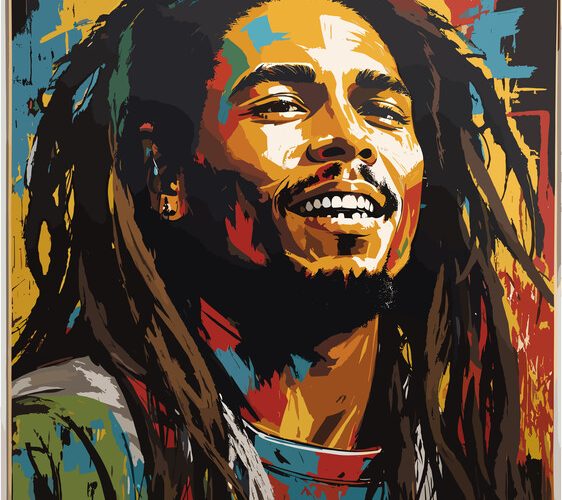Bob Marley is an undisputed icon of reggae music, known not only for his timeless songs but also for his charisma, spiritual presence, and political awareness. His journey from a small Jamaican village to becoming the “King of Reggae” is a testament to his musical genius, determination, and cultural impact.
Learning the Guitar and Early Beginnings
Born in Nine Mile, Jamaica, in 1945, Robert Nesta Marley grew up in a rural setting where music was a major part of everyday life. He was drawn to music from an early age and, despite not having formal training, taught himself to play the guitar. His early influences included American R&B, ska, and traditional Jamaican folk music, which would later shape his unique sound.
Formation of The Wailers
Marley’s talent led him to Kingston, where he met Peter Tosh and Bunny Wailer. Together, they formed The Wailers in the early 1960s, blending ska and rocksteady to create the early foundations of reggae. The group started recording under the guidance of producer Clement “Coxsone” Dodd at Studio One, releasing hits like “Simmer Down”, which gained massive popularity in Jamaica.
Migration to Kingston and Working with Producers
Kingston, the vibrant heart of Jamaican music, played a crucial role in Marley’s career. After working with Dodd, The Wailers collaborated with producer Lee “Scratch” Perry, whose innovative production techniques helped refine their sound. Under Perry’s guidance, they released some of their most powerful early tracks, including “Duppy Conqueror” and “Small Axe.” These songs established The Wailers as a force in Jamaica’s growing reggae movement.
Meeting Chris Blackwell and International Success
A pivotal moment in Marley’s career came in the early 1970s when he met Chris Blackwell, the founder of Island Records. Blackwell saw Marley as a global star and helped bring reggae to an international audience. He provided The Wailers with the resources to record their breakthrough album, “Catch a Fire” (1973), followed by “Burnin'” (1973), which featured classics like “Get Up, Stand Up” and “I Shot the Sheriff.” These albums introduced reggae to mainstream audiences, particularly after Eric Clapton covered “I Shot the Sheriff,” bringing even more attention to Marley’s music.
Formation of the I-Threes and a New Sound
After Peter Tosh and Bunny Wailer left the group, Marley continued as Bob Marley & The Wailers, bringing in a new backup vocal trio called the I-Threes, which included his wife, Rita Marley, along with Judy Mowatt and Marcia Griffiths. Their harmonies added richness to Marley’s evolving sound, which incorporated themes of love, social justice, and spirituality.
His Music and Message
Marley’s music went beyond entertainment—it carried powerful messages of peace, unity, and resistance. Songs like “No Woman, No Cry”, “Exodus”, and “Redemption Song” spoke to the struggles of the oppressed while spreading hope and empowerment. His 1977 album “Exodus” solidified his status as a global icon, and “One Love” became an anthem for peace.
Charisma, Political Awareness, and Cultural Impact
Beyond his music, Marley’s presence was electrifying. His charisma and passion captivated audiences worldwide. He was not just a musician; he was a spiritual leader who used his platform to speak on political and social issues. His involvement in Jamaican politics, particularly his attempt to unite warring factions through the One Love Peace Concert in 1978, demonstrated his commitment to peace and justice.
Bob Marley’s influence transcends music. He became a symbol of resistance, love, and unity, earning him the title of the King of Reggae. Today, his legacy lives on, with his songs continuing to inspire generations around the world.
Further Reading
- The Official Bob Marley Store
- Rebel Music: Bob Marley & Roots Reggae
- Uprising (Vinyl)
- Legend 35th Anniversary Double vinyl
- Stretched Canvas Print Bob Marley Poster
One love One heart One People


